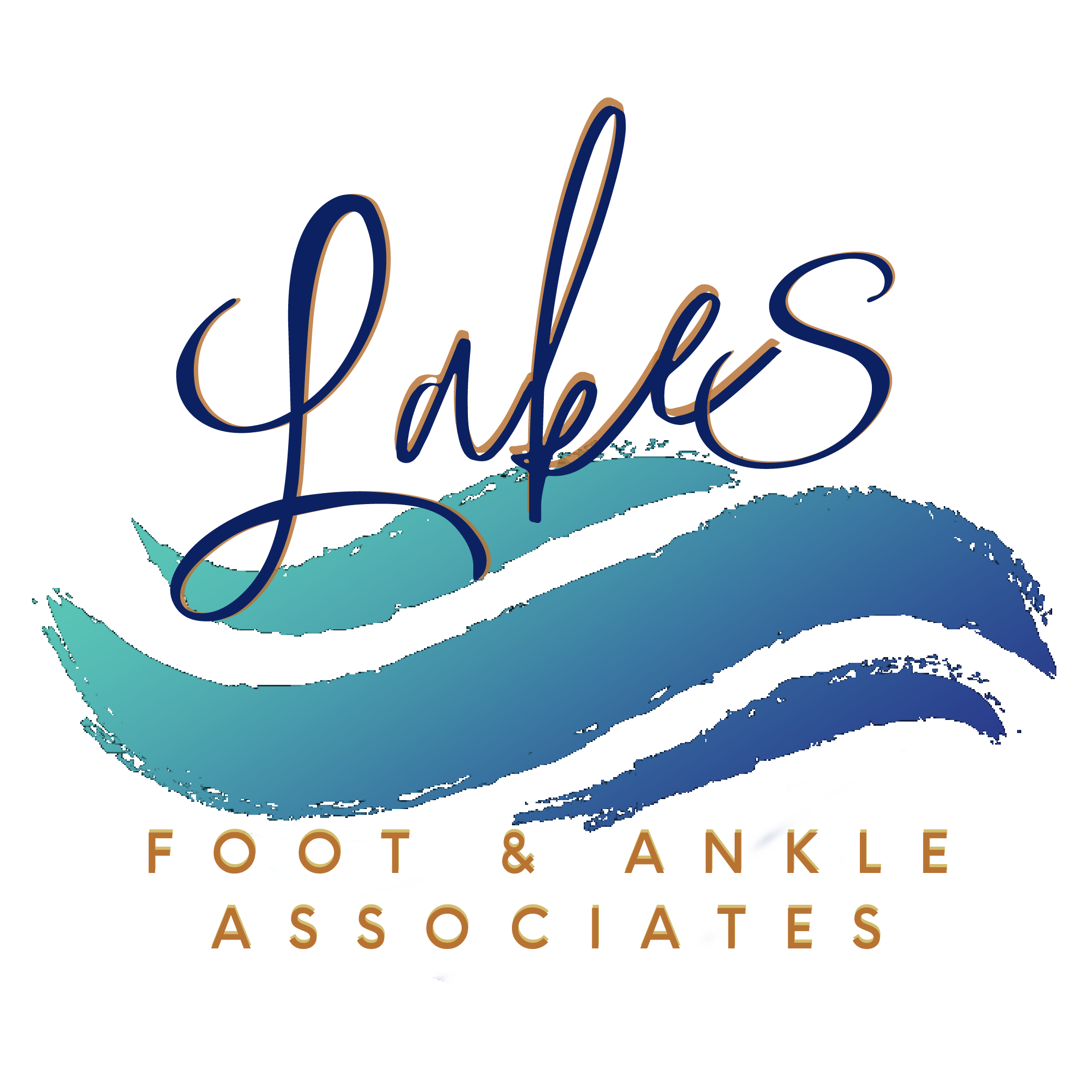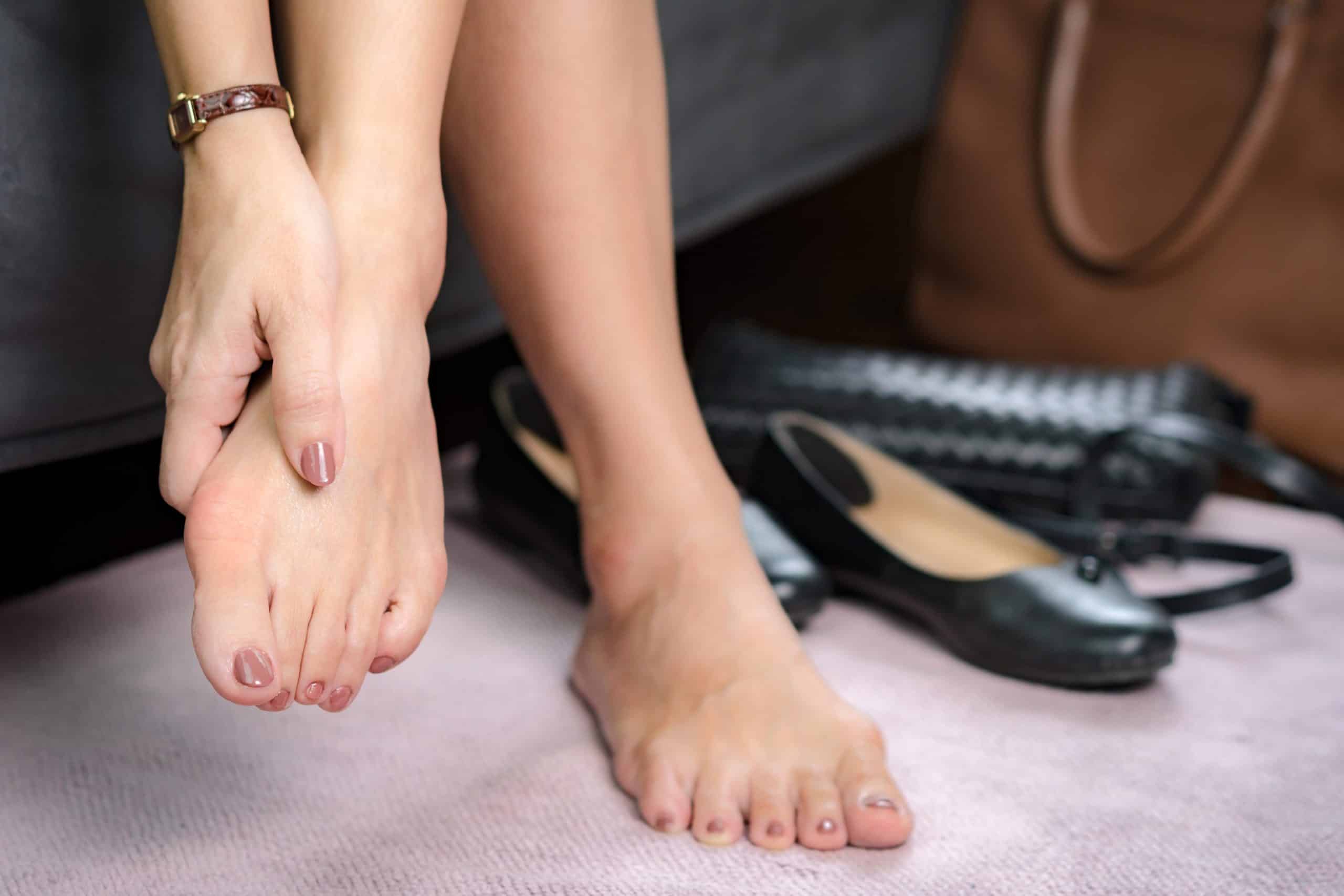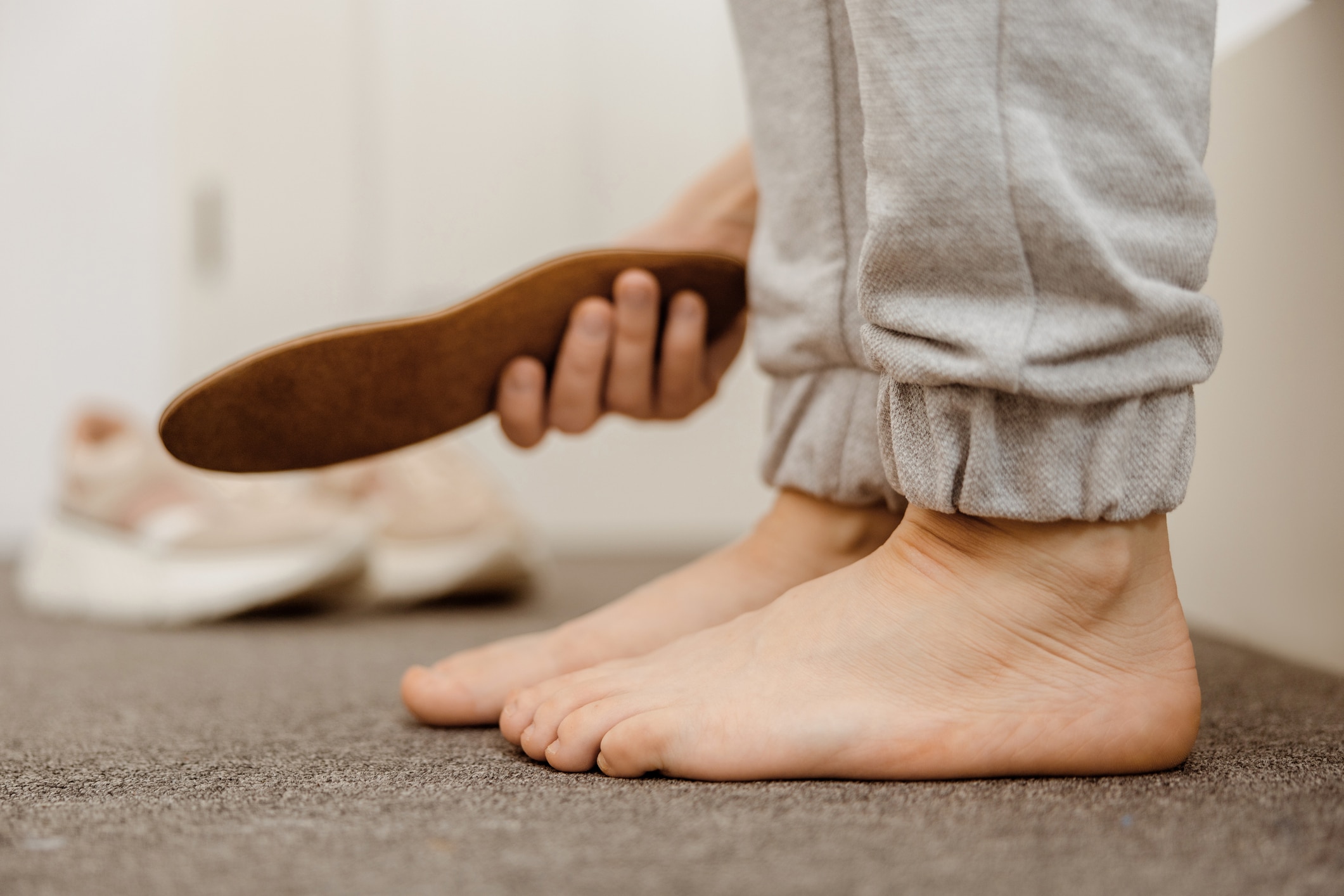Last month, we talked about some of the most common toe deformities we see here at Lakes Foot & Ankle Associates. This month, we want to take more time to address the most prevalent of those afflictions: bunions. Patients often have a lot of questions about bunions, known in our profession as hallux valgus: literally “bent-out toe” in Latin. So we’re here to take on some of those frequently asked questions and get the answers you seek!
How Common Are Bunions?
Up to 23% of adults and 36% of seniors have bunions, an often painful misalignment of the big toe as it leans and crowds in on the smaller toes. A progressive deformity, hallux valgus can cause burning, aching, misalignment of other toes, and even confidence-damaging cosmetic concerns.
What Causes You to Get a Bunion?
The truth is, we’re not 100% sure what causes bunions. We do know that narrow, too small, and high-heeled shoes certainly don’t help matters. But it doesn’t appear that they cause the problem so much as aggravate it. In fact, some babies are born with bunions, suggesting that biomechanics and foot structure play a bigger role in their development.
What differentiates a bunion from other toe deformities is damage to a specific joint: the first metatarsophalangeal (MTP) joint. This is the joint at the base of your big toe, connecting the toe bone to the longer foot bones (metatarsals). It’s the one that allows you to move your big toe up and down, which contributes to your overall balance and gait.
Are Certain People at Higher Risk of Developing Bunions?
Yes—doctors have identified several groups that are at an increased risk of developing bunions. Risk factors include:
- Being female: women are roughly twice as likely as men to have hallux valgus. While many want to attribute this to the fact that women are more likely to wear high heels, research has found that this prevalence remains the same even in cultures where people don’t wear shoes.
- Wearing ill-fitting shoes: both men and women who wear shoes with narrow toe boxes, pointed toes, or a tight fit are at risk of developing or aggravating bunions.
- Having rheumatoid arthritis (RA): any inflammatory condition that affects the joints can also affect the joints of the toes and feet. Up to 90% of people with RA report having foot problems like bunions.
- Having flat feet: certain foot structures and shapes like flat feet can put more pressure on the MTP joint. This pressure can cause destabilization and eventually the tell-tale bump of a bunion.
Why Do Bunions Need Attention?
Bunions may start out as more of a cosmetic concern than a mobility issue, but they won’t always stay that way. Bunions are a progressive deformity, meaning that they will get worse over time. You may only notice red, swollen skin at the base of your big toe at first, but once a hard, bony bump starts forming, it is likely to become painful and stiff.
Eventually, this pain, swelling, and stiffness can lead to a host of other issues, such as:
- Trouble running, walking, or standing
- Arthritis of the big toe joint
- Corns, calluses, and other skin irritations
- Further toe deformities such as hammertoe
- Bursitis (inflammation of small pads that cushion the bones around your joints)
Can Bunions Be Reversed? Can a Bunion Go Away?
Bunions will not “clear up” on their own without treatment, unfortunately. But there are plenty of interventions you can make to stop their progression and manage them if you start early! Conservative treatments include:
- Short-term NSAID use (aspirin, ibuprofen, or naproxen) to relieve pain and swelling
- Ice packs or cold water baths (cold therapy can reduce swelling)
- Toe stretches, like toe points, toe curls, and towel grip and pull exercises
- Accessories such as gel pads, bunion sleeves, and toe spacers
- Custom orthotics
When Should I Consider Bunion Surgery?
The only way to totally get rid of a bunion is to remove it surgically—but don’t panic just yet. Not all bunions require surgical intervention. Waiting until the deformity is severe may make surgery inevitable, but we usually recommend exhausting your conservative treatment options first. Your podiatrist will work with you to determine the right time for you to consider surgery.
We may recommend surgery if your pain is severe and strikes you even when you’re wearing comfortable shoes, interfering with the activities you love to do. At Lakes Foot & Ankle Associates, our goal is always to help you get back on your feet and back to doing the things you love—we’ll be with you through every step of the treatment process!
How Do I Know When to See a Doctor for Bunion Treatment?
We recommend coming to see a podiatrist at Lakes Foot & Ankle Associates as soon as you notice bunion symptoms. We can create a personalized plan to manage and treat your condition, and the earlier you come in to see us, the better. Make an appointment if you notice a visible, bony lump on the inner part of your foot, near the base of your big toe. Similarly, if you have pain, swelling, or stiffness that interferes with your daily activities or have difficulty finding shoes that fit, we’re here to help!
Lakes Foot & Ankle Associates: Bunion Treatment in Commerce Twp, MI
Take the guesswork out of identifying and treating your foot pain today with the experts at Lakes Foot & Ankle Associates. Everyone’s feet are as unique as the activities they love to do, so we provide a customized diagnostic and treatment plan for each patient we see. Come experience the difference our advanced imaging, custom orthotics, and treatment plans can make! Call (248) 360-3888 or reach out online to schedule your appointment!
| Monday | 8:30am – 5:00pm |
| Tuesday | 9:00am – 5:00pm |
| Wednesday | 8:30am – 5:00pm |
| Thursday | 9:00am – 6:00pm |
| Friday | 7:30 am – 4:00pm |
| Saturday | – Closed – |
| Sunday | – Closed – |



